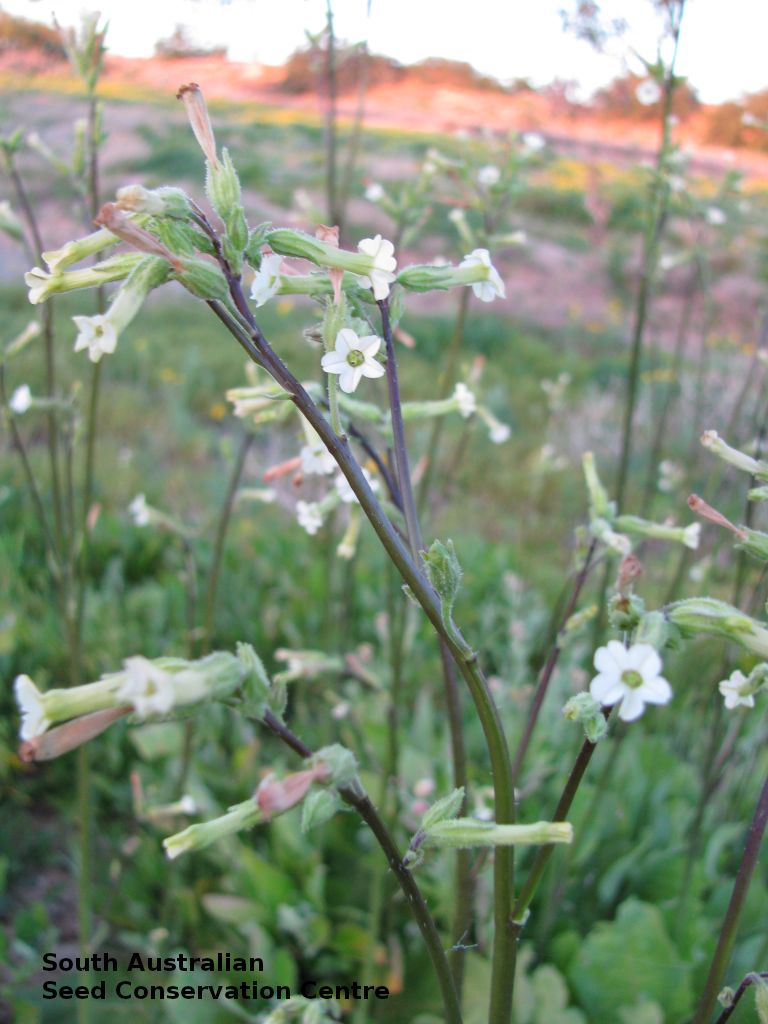
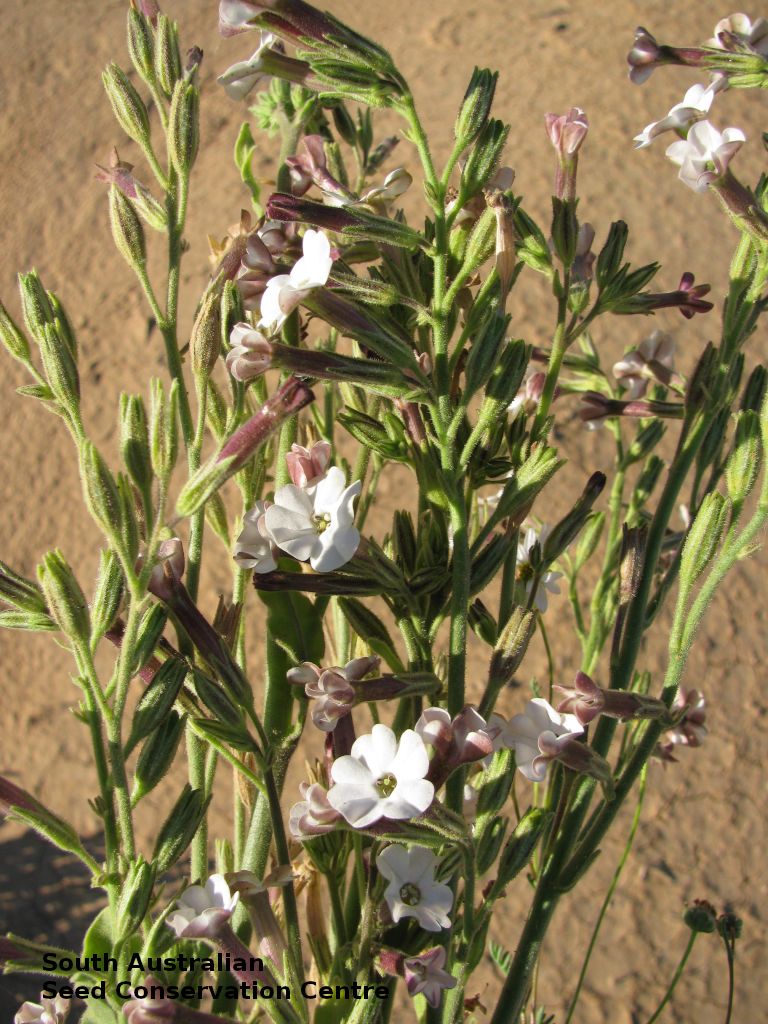
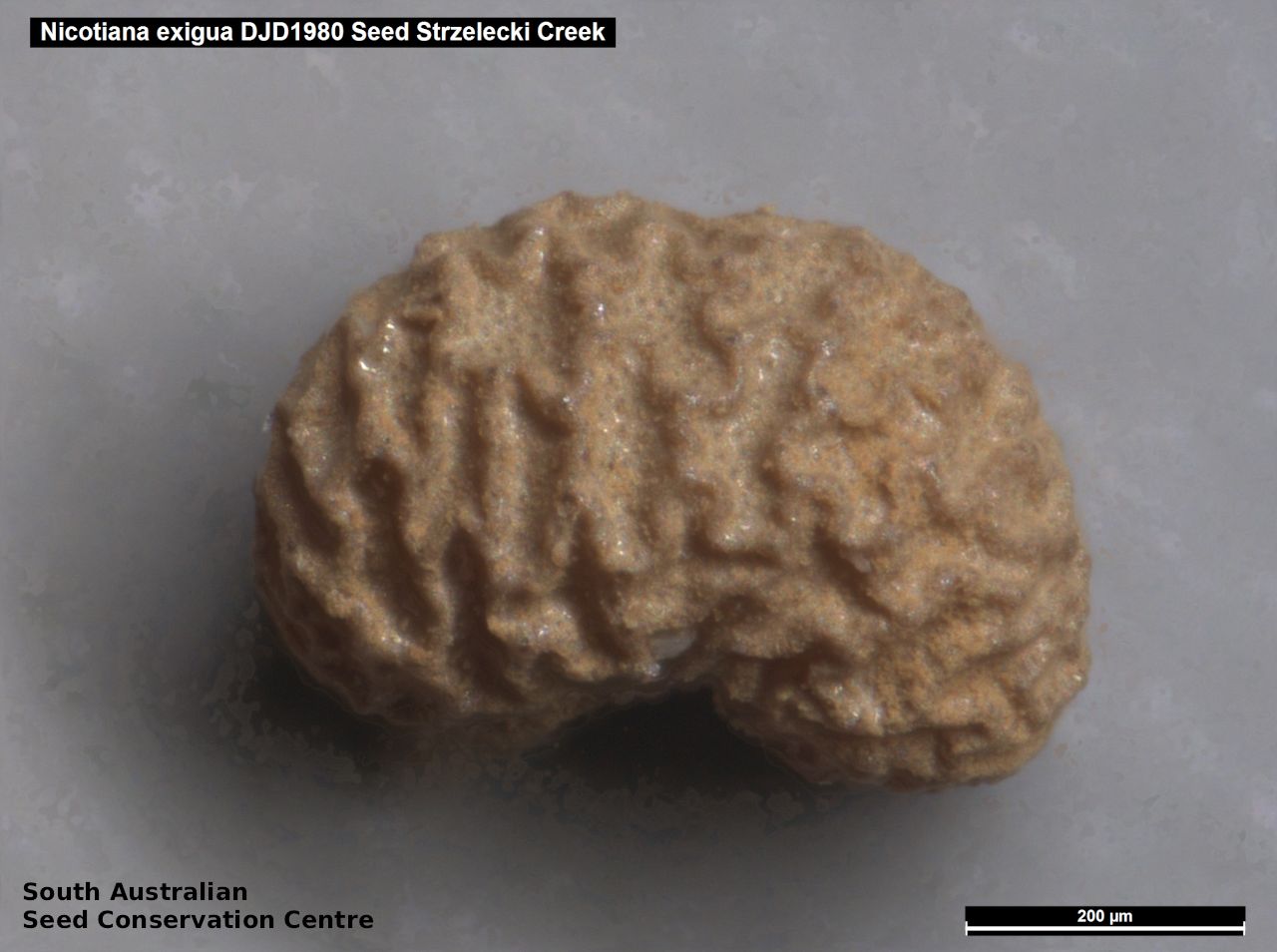
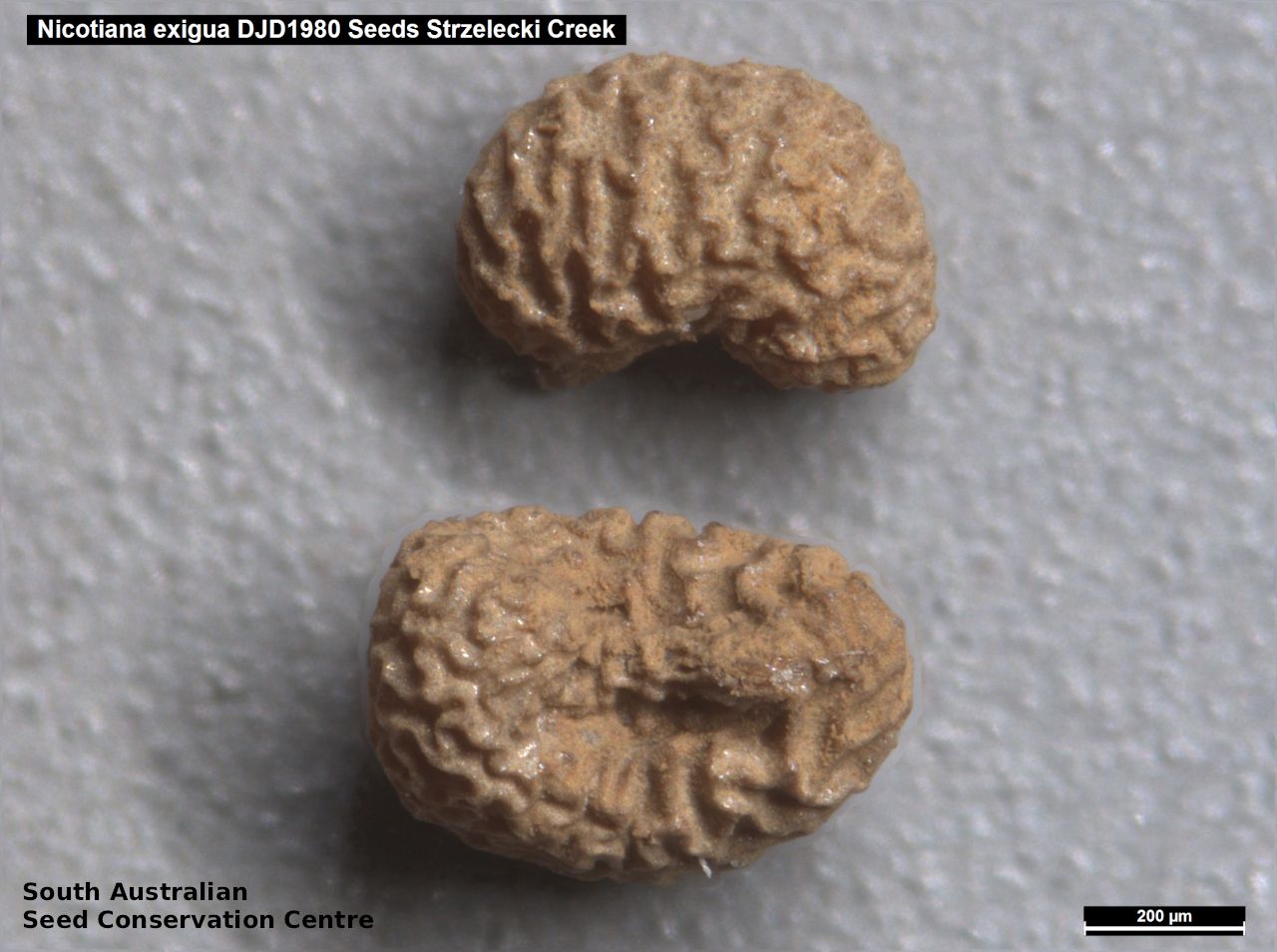
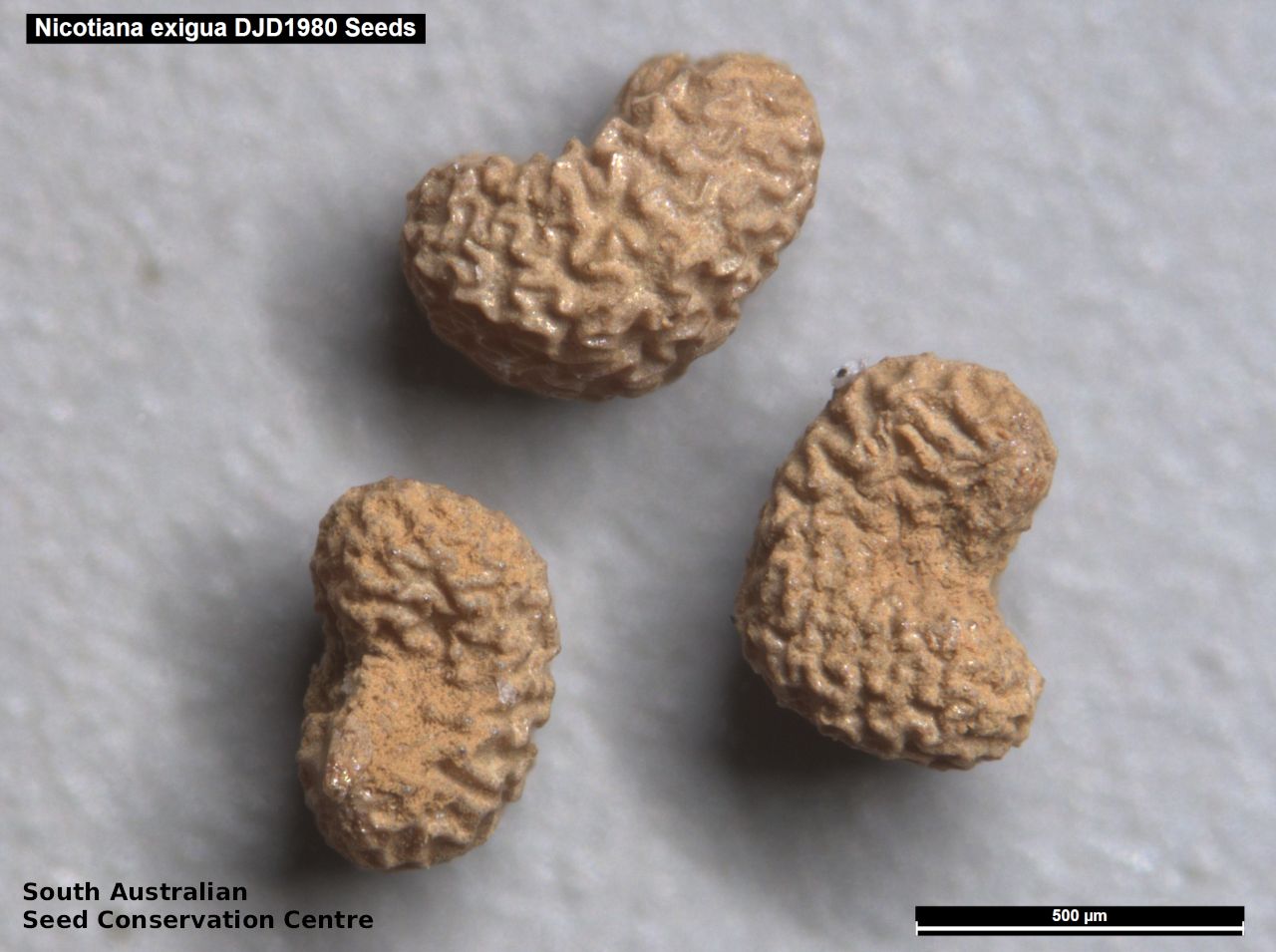

_hreg_896.png)
Common names
Slender Tobacco
Etymology
Nicotiana, named after Jean Nicot (1530-1600), a French Ambassador for the King of France to Lisbon in 1560, who sent the first tobacco plant to France. Species 'Strzelecki Creek', refers to the collection location. The species was initially referred to Nicotiana exigua (from the Latin 'exiguus', meaning scanty, slender, possibly referring to the smaller and more slender corolla tube (flower)) but the material is not N. exigua when compared with the type sheet at the Herbarium of South Australia or the isotype at Kew. Nicotiana exigua is consideredby most authors to be a synonym of N. suaveolens but Mark Chase (per. comm.) considers N. exigua to be a distinct species and that N. sp. Strelecki Creek is neither N. exigua nor N. suaveolens but a distinct species with many hairs and not 'nearly glabrous', as in N. exigua and N. suaveolens.
Distribution and status
Found in the north-east corner of South Australia, growing on bank of creeks. Native. Uncommon in South Australia.
Herbarium region: Lake Eyre
AVH map: SA distribution map (external link)
Plant description
Herb to 50 cm high, hairy or sub-glabrous, with rough hairs along leaf surfaces and stems. Leaves thin, slightly fleshy, to 18 cm long and 6.5 cm wide; margin undulate with main lateral and lesser veins distinct. Basal leaves a rosette at first, then transition to lower cauline, later becoming less obvious, elliptic-acute. Cauline leaves elliptic, ovate or broad lanceolate. Inflorescence a long, erect spreading spike; repeatedly branched, with tubular flowers, white inside and cream, green or purple tinged outside held upward or sub-horizontal. Fruits are brown conical-ovate capsule to 8 mm long. Seeds are brown reniform seed to 0.7 mm long and 0.5 mm wide, covered in wrinkles. Seed embryo type is linear, fully-developed.
Seed collection and propagation
Collect seeds between September and November. Collect mature capsules that are brown or turning a pale straw-colour and contain brown seeds. Can collect individual capsules or break off the whole fruit spike. Place the capsules in a tray and leave to dry for one to two weeks, then rub the capsules gently by hand to dislodge the seeds. Use a sieve to separate the unwanted material. Store the seeds with a desiccant such as dried silica beads or dry rice, in an air tight container in a cool and dry place. From one collection, the seed viability was high, at 100%.
| Location | No. of seeds (weight grams) | Number of plants | Date collected | Collection number Collection location | Date stored | % Viability | Storage temperature |
|---|---|---|---|---|---|---|---|
| BGA MSB | 33,000 (2.02 g) 33,000 (2.02 g) | 100+ | 6-Oct-2010 | DJD1980 Lake Eyre | 1-Jan-2012 | 100% | -18°C |
Number of plants: This is the number of plants from which the seeds were collected.
Collection location: The Herbarium of South Australia's region name.
% Viability: Percentage of filled healthy seeds determined by a cut test or x-ray.